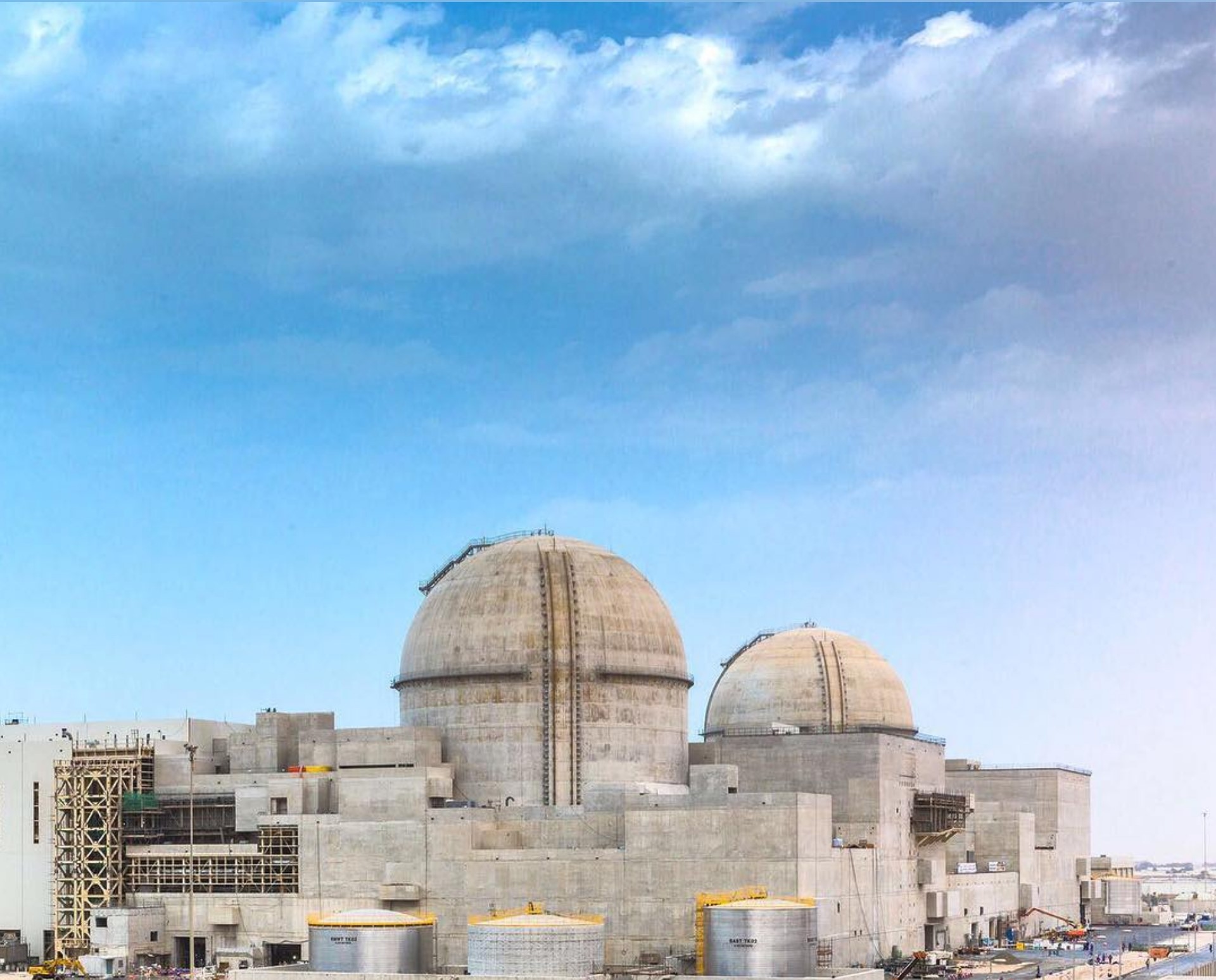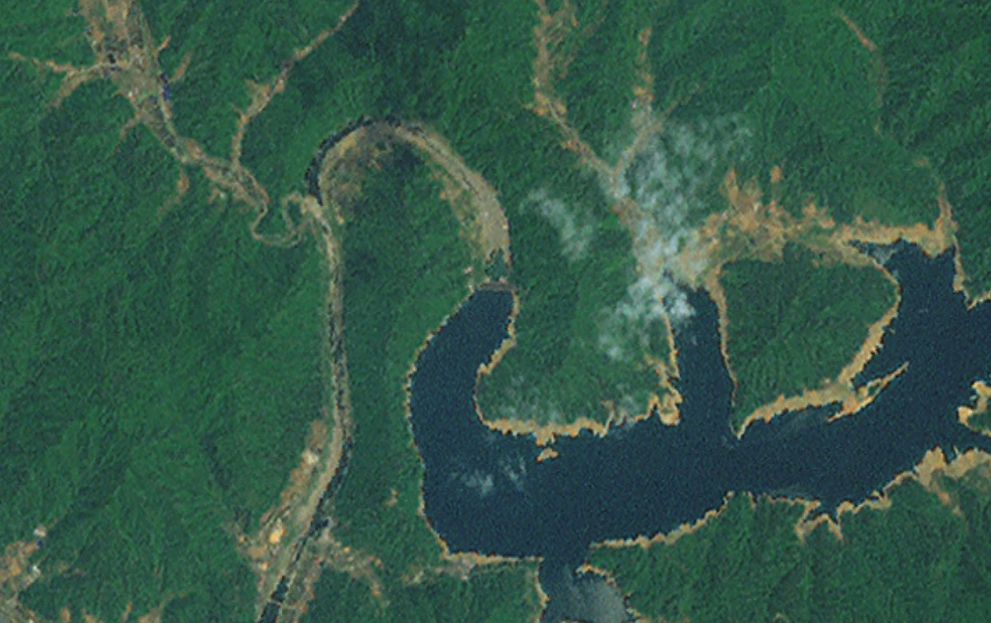|
KHNP
Korea Hydro & Nuclear Power (KHNP; ) is a subsidiary of the Korea Electric Power Corporation (KEPCO). It operates large nuclear and hydroelectric plants in South Korea, which are responsible for about 27 percent of the country's electric power. In December 2020, KHNP operated 24 nuclear power plants, 37 hydroelectric plants, 16 pumped-storage power plants, and 32 renewable power plants. Its total facility capacity was 28,607 MW, with a total generation capacity of 164,613 GWh. History KHNP was established in 2001 as part of a general restructuring at KEPCO, which opened its first nuclear plant at Kori in Busan in 1977. Commercial operation at Kori nuclear #1 began in 1978. Timeline Before separation from KEPCO: *1978: Commercial operation of Kori 1 began. *1983: Commercial operation of Wolsong 1 and Kori 2 began. *1985: Commercial operation of Kori 3 began. *1986: Commercial operation of Kori 4 and Hanbit 1 began. *1987: Commercial operation of Hanbit 2 began. *1988: Commercia ... [...More Info...] [...Related Items...] OR: [Wikipedia] [Google] [Baidu] |
APR-1400
The APR-1400 (for Advanced Power Reactor 1400 MW electricity) is an advanced pressurized water nuclear reactor designed by the Korea Electric Power Corporation (KEPCO). Originally known as the Korean Next Generation Reactor (KNGR), this Generation III reactor was developed from the earlier OPR-1000 design and also incorporates features from the US Combustion Engineering (C-E) System 80+ design. Currently in South Korea there are 3 units in operation ( Shin Kori unit 3 and 4, Shin Hanul unit 1), and 3 units in construction ( Shin Hanul unit 2, Shin Kori unit 5 and 6). Two units are completed and in commercial operation in the United Arab Emirates at Barakah, with two more under construction at the same plant. History APR-1400 design began in 1992 and was awarded certification by the Korean Institute of Nuclear Safety in May 2002. The design certification application was submitted to the US Nuclear Regulatory Commission (NRC) in December 2014 and in March 2015, it was ... [...More Info...] [...Related Items...] OR: [Wikipedia] [Google] [Baidu] |
Kori Nuclear Power Plant
The Kori Nuclear Power Plant (Korean: 고리원자력발전소, Hanja: 古里原子力發電所) is a South Korean nuclear power plant located in Kori, a suburban village in Busan. It is the world's largest fully operational nuclear generating station by total reactor count and the number of currently operational reactors since 2016, after it exceeded in nameplate capacity Canada's Bruce Nuclear Generating Station. It is owned and operated by Korea Hydro & Nuclear Power, a subsidiary of KEPCO. The first reactor began commercial operation in 1978 and operated until 2017 when it was decommissioned. Units 2, 3, and 4 started commercial operations in the 1980s. All reactors on site are pressurized water reactors. Reactors An expansion of the plant begun in 2006 added four new Korean-sourced reactors, the so-called Shin Kori reactors (shin meaning "new"). The first pair of Shin Kori reactors are of the OPR-1000 design, while the second two are the APR-1400 design. Shin Kori 1 and 2 ... [...More Info...] [...Related Items...] OR: [Wikipedia] [Google] [Baidu] |
Wolseong Nuclear Power Plant
The Wolseong Nuclear Power Plant, or Wolsong, is a nuclear power plant located on the coast near Nae-ri, Yangnm-myeon, Gyeongju, North Gyeongsang province, South Korea. It is the only South Korean nuclear power plant operating CANDU-type PHWR (Pressurized Heavy Water Reactors).(in Korean경주시의 산업·교통 (Industry and Transportation of Gyeongju) Nate / Encyclopedia of Korean Culture Korea Hydro & Nuclear Power owns the plant. These reactors are capable of consuming multiple types of fuel, including wastes from South Korea's other nuclear plants. The power plant site including Yangnam-myeon. Yangbuk-myeon and Gampo-eup was designated an industrial infrastructure development zone in 1976. Construction of Wolseong 1 started in 1976 and was completed in 1982. In the following year, the power plant began commercial operations. This PHWR reactor has a gross generation capacity of 678 MW. Wolseong reactors 2, 3 and 4 were completed in 1997, 1998 and 1999, respectively. E ... [...More Info...] [...Related Items...] OR: [Wikipedia] [Google] [Baidu] |
Hanul Nuclear Power Plant
The Hanul Nuclear Power Plant (originally the Uljin NPP Korean: 울진원자력발전소) is a large nuclear power station in the Gyeongsangbuk-do province of South Korea. The facility has six pressurized water reactors (PWRs) with a total installed capacity of 5,881 MW. The first went online in 1988. In the early 2000s it was the third largest operational nuclear power plant in the world and the second largest in South Korea. The plant's name was changed from Uljin to Hanul in 2013. On 4 May 2012, ground was broken for two new reactors, Shin ("new") Uljin-1 and -2 using APR-1400 reactors. Fuel loading completed at Shin Hanul 1 in October 2021. Unit 1 achieved first criticality on 22 May 2022, 11 am local time with electricity generation expected to start in June 2022. The APR-1400 is a Generation III PWR design with a gross capacity of 1400 MW. It is the first to use Korean-made components for all critical systems. In 2012, the reactors were expected to cost abo ... [...More Info...] [...Related Items...] OR: [Wikipedia] [Google] [Baidu] |
Gyeongju
Gyeongju ( ko, 경주, ), historically known as ''Seorabeol'' ( ko, 서라벌, ), is a coastal city in the far southeastern corner of North Gyeongsang Province in South Korea. It is the second largest city by area in the province after Andong, covering with a population of 264,091 people (as of December 2012.) Gyeongju is southeast of Seoul, and east of Daegu. The city borders Cheongdo and Yeongcheon to the west, Ulsan to the south and Pohang to the north, while to the east lies the coast of the Sea of Japan. Numerous low mountains—outliers of the Taebaek range—are scattered around the city. Gyeongju was the capital of the ancient kingdom of Silla (57 BC – 935 AD), which ruled about two-thirds of the Korean Peninsula at its height between the 7th and 9th centuries, for close to one thousand years. Later Silla was a prosperous and wealthy country, and its metropolitan capital of Gyeongju was the fourth largest city in the world. A vast number of archaeological sites an ... [...More Info...] [...Related Items...] OR: [Wikipedia] [Google] [Baidu] |
Korea Electric Power Corporation
Korea Electric Power Corporation, better known as KEPCO (Hangul: 켑코) or Hanjeon (Hangul: 한전), is the largest electric utility in South Korea, responsible for the generation, transmission and distribution of electricity and the development of electric power projects including those in nuclear power, wind power and coal. KEPCO, through its subsidiaries, is responsible for 93% of Korea's electricity generation as of 2011. The South Korean government (directly and indirectly) owns a 51.11% share of KEPCO. Together with its affiliates and subsidiaries, KEPCO has an installed capacity of 65,383 MW. On the 2011 Fortune Global 500 ranking of the world's largest companies, KEPCO was ranked 271. KEPCO is a member of the World Energy Council, the World Nuclear Association and the World Association of Nuclear Operators. As of August 2011, KEPCO possesses an A+ credit rating with Fitch Ratings, while Moody's has assigned KEPCO an A1 stable rating. Originally located in Samseong- ... [...More Info...] [...Related Items...] OR: [Wikipedia] [Google] [Baidu] |
Hydroelectricity
Hydroelectricity, or hydroelectric power, is Electricity generation, electricity generated from hydropower (water power). Hydropower supplies one sixth of the world's electricity, almost 4500 TWh in 2020, which is more than all other Renewable energy, renewable sources combined and also more than nuclear power. Hydropower can provide large amounts of Low-carbon power, low-carbon electricity on demand, making it a key element for creating secure and clean electricity supply systems. A hydroelectric power station that has a dam and reservoir is a flexible source, since the amount of electricity produced can be increased or decreased in seconds or minutes in response to varying electricity demand. Once a hydroelectric complex is constructed, it produces no direct waste, and almost always emits considerably less greenhouse gas than fossil fuel-powered energy plants. [...More Info...] [...Related Items...] OR: [Wikipedia] [Google] [Baidu] |
Hwacheon Dam
Hwacheon Dam is a concrete gravity dam on the North Han (Pukhan) River in Hwacheon County, Gangwon-do Province, South Korea. The dam was completed in 1944 as a primary source of electricity in southern Korea. It was the focal point of a raid during the Korean War and also provides flood protection from North Korea's Imnam Dam upstream. Background The dam was constructed by the Japanese during their occupation of Korea in World War II. The Han River Hydroelectric Company began construction in July 1939 and the dam was complete in October 1944. Several months prior in May, the first generator of the power plant was operational, the second that October. The third generator was operational in 1957 and the last of the four generators was installed in 1968. Before the upstream Peace Dam was completed in 2005, the Hwacheon Dam served as the first line-of-defense for a collapse or excess discharge from the Imnam Dam in North Korea. Korean War raid At midnight 8 April 1951, North ... [...More Info...] [...Related Items...] OR: [Wikipedia] [Google] [Baidu] |
Jeollanam-do
South Jeolla Province (; ''Jeollanam-do''; ), also known as Jeonnam, is a province of South Korea. South Jeolla has a population of 1,902,324 (2014) and has a geographic area of located in the Honam region at the southwestern tip of the Korean Peninsula. South Jeolla borders the provinces of North Jeolla to the north, South Gyeongsang to the northeast, and Jeju to the southwest in the Korea Strait. Muan County is the capital and Yeosu is the largest city of South Jeolla, with other major cities including Suncheon, Mokpo, and Gwangyang. Gwangju was the largest city of South Jeolla until becoming a Metropolitan City in 1986, and was the historic capital until the provincial government was relocated to the Muan County town of Namak in 2005. South Jeolla was established in 1896 from the province of Jeolla, one of the Eight Provinces of Korea, consisting of the southern half of its mainland territory and most outlying islands. Geography The province is part of the Honam region, a ... [...More Info...] [...Related Items...] OR: [Wikipedia] [Google] [Baidu] |
Yeonggwang County
Yeonggwang County (''Yeonggwang-gun'') is a county in South Jeolla Province, South Korea. Speciality Yeonggwang is a large producer of a fish, the small yellow croaker which are sometimes given by Korean people as a gift to others. It is called ''Yeonggwang gulbi'' (meaning "dried croaker") among Koreans, and it is nicknamed "rice thief" because of its wide popularity. The fish originated from the Goryeo Dynasty. They migrate northward from the East China Sea, where they spend the winter season, to Yeonpyeongdo Island, to spawn at the start of the thawing season. They spawn at sea in front of Chilsan, near Beopseongpo in Yeonggwang, between April 10 and 30, while moving northward. Nuclear power plant The Hanbit Nuclear Power Plant was established in 1979 and has reached its full capacity. Now there are six plants. In 2007, plants of Yeonggwang achieved a position of third in the world, ranked by the degree of utilization.''한국수력원자력(주) - 영광원자력본부' ... [...More Info...] [...Related Items...] OR: [Wikipedia] [Google] [Baidu] |





